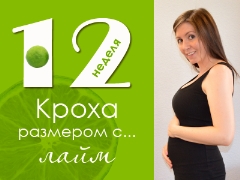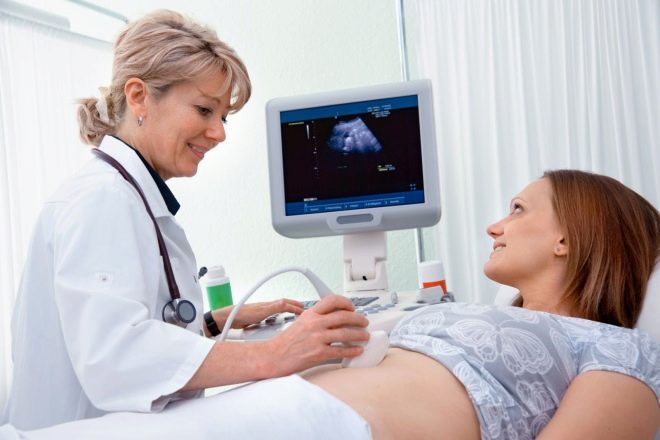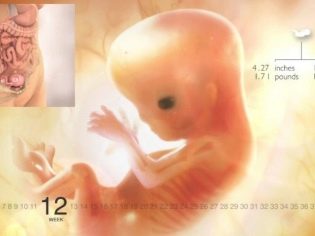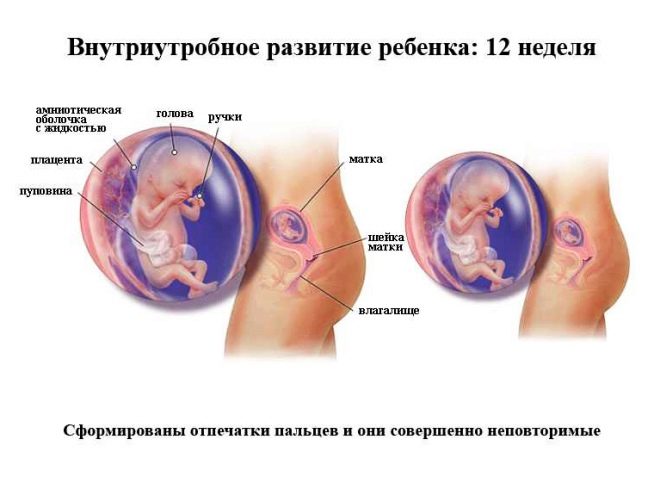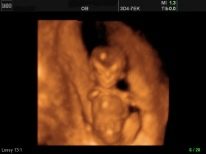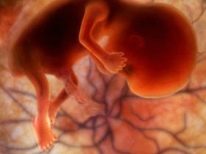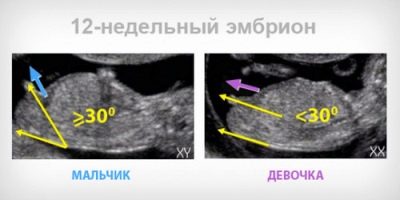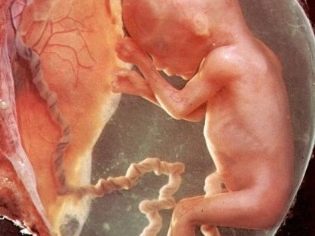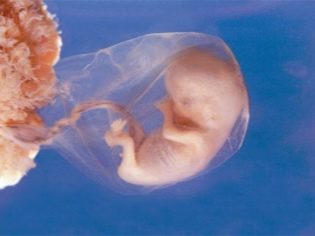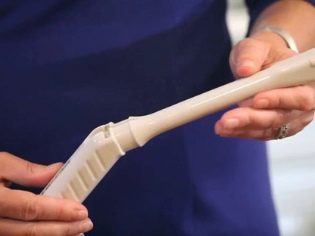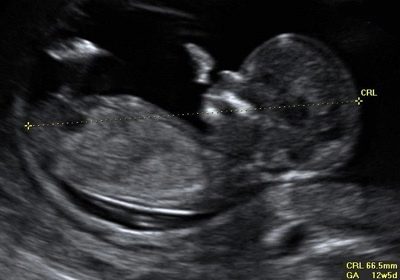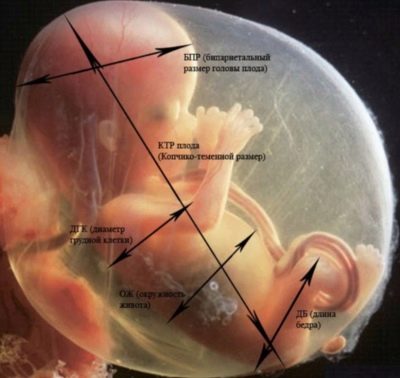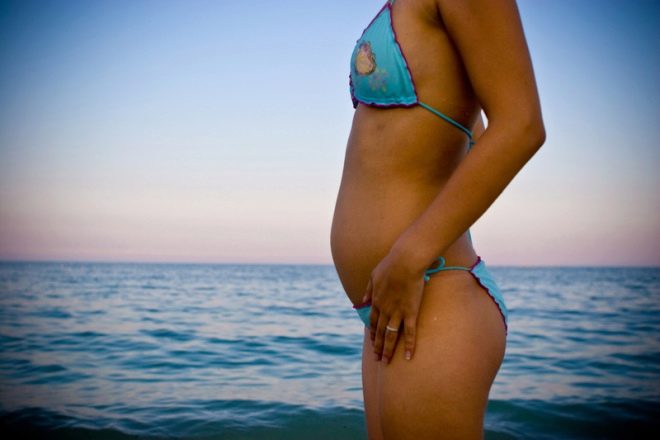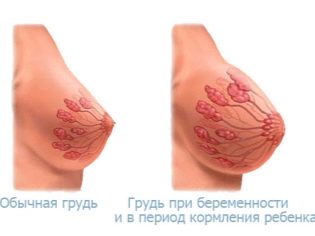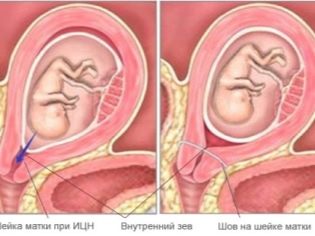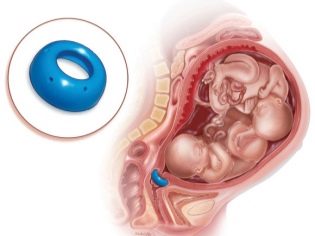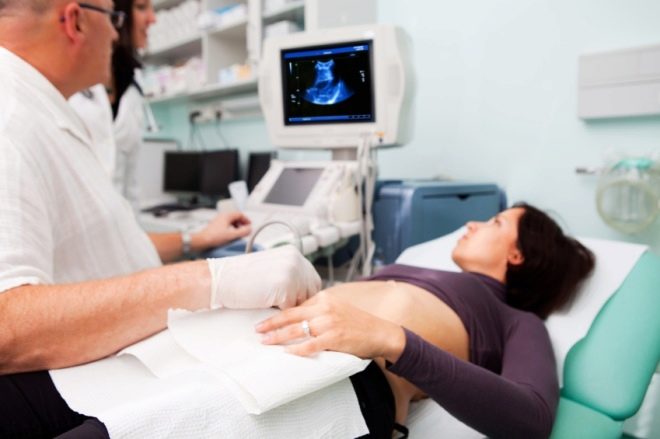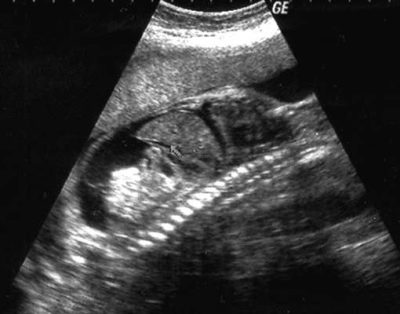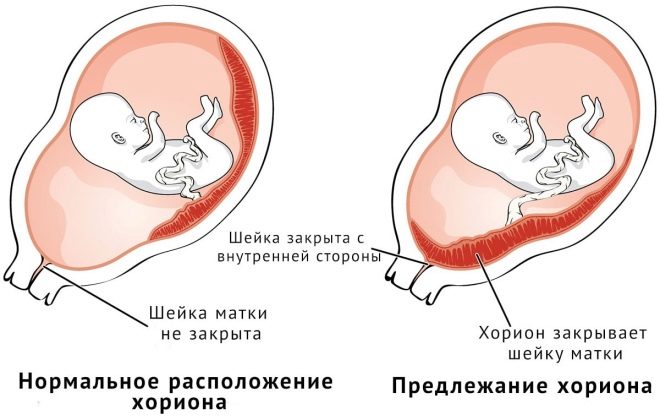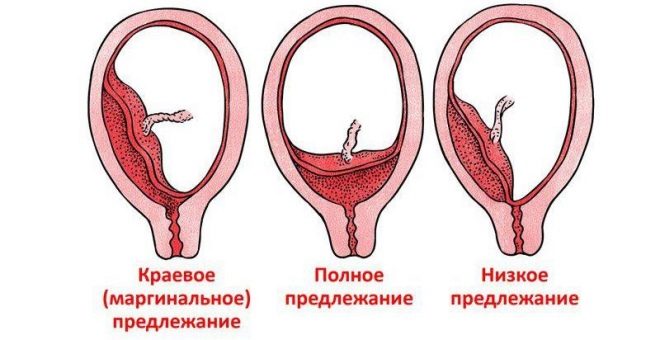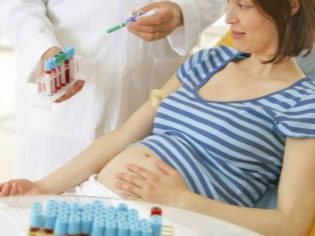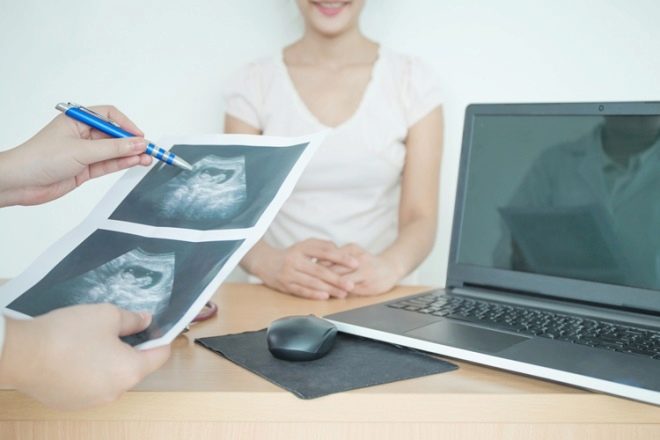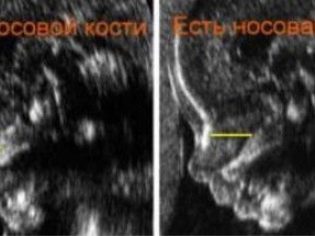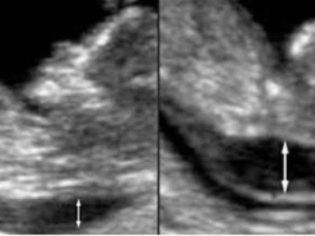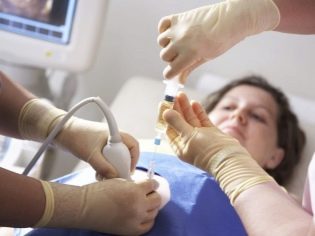12 week of pregnancy: what happens to the fetus and the expectant mother?
First trimester of pregnancy ends. This means that exactly a third of the uneasy path by a woman is successfully passed. 12 week of pregnancy is unusual and very interesting. On her future mother, perhaps, waiting for the first "meeting" with her crumbs on ultrasound. This time is well suited to sum up the first results. What happens in the 12th week with the baby and mother, we will tell in this article.
How many months is it
The third obstetric month of pregnancy ends. In each obstetric month, unlike the calendar month, exactly 4 weeks and not a day more. Often, women are confused in their own terms, because, according to their calculations, there is only one term, and in the antenatal clinic the doctor sets a longer term.
The fact is that obstetricians and gynecologists count from the first day of the last menstruation, and the future mothers themselves mostly consider it from conception (or from ovulation, since it is during this period that the conception is greatest). 11-12 obstetric week of pregnancy - the last in the first trimester. She means that 10 weeks from conception, 8 weeks from delay. Exactly in a week, a woman will enter the second trimester, which is considered the most pleasant and easy, filled with positive emotions and expectation of a miracle.
Baby development
In the last week, the crumb has made a real breakthrough in its development - in just a few days it has changed dramatically both externally and internally. Now the baby is no longer like a creature from another planet or a tadpole, it is almost formed, only a very small person.
Almost half a month ago, the baby changed status - he is no longer an embryo, but a fetus. That is what doctors call it. This means that the most dangerous period of development has passed, and now the crumb will grow and strengthen, all the organs and system are laid. Some of them are already functioning.
The growth of the baby now ranges from 50 to 95 mm, the weight is approaching 15-20 grams. To imagine what size the child has reached, you need to remember what a medium-sized lemon looks like. Growth rates are impressive: in just the last 2 weeks, the baby has doubled in size.
Developmental Changes in 7 Fetal Weeks
Appearance
The fetal head is still large, which is why there is some disproportion in the child’s appearance. Limbs look short, arms and legs have yet to grow and acquire normal proportions. The hands of the baby are longer than the legs. The formation of the fingers is complete: they already have small, yet translucent nails.
The eyes of the crumbs moved to their place on either side of the nose bridge. This week the formation of the eyelids is completed, which so far cover the organs of vision. The baby will not learn to open his eyes soon. In the meantime, the formation of the retina, cornea and lens continues.Small ears, the formation of which lasted over the past weeks, almost took shape. At the 12th obstetric week, the child’s ears “acquire” lobes.
The nose grows. The face ceases to be flattened, a relief, profile appears. On the head grow hair. Many women associate this process with the occurrence of heartburn in this period. Like it or not, medicine is not known for certain. But now the kids, who are destined to be born with a luxurious and funny head of hair, have a slightly different look than crumbs, which are born almost bald.
The internal organs no longer “look out” beyond the abdominal cavity, the abdomen takes on a neat appearance. More and more neck is drawn: it is already formed, and the baby can theoretically make head movements. The skin does not appear red because the skin of the baby is of a different color. It is simply so thin that blood vessels and capillaries appear through it.
Nervous system
It continues to evolve and form. While the main impulses arrive in the spinal cord, since the brain cannot yet receive and process them. There is its active development. Already, the crumbs brain has two hemispheres, the cerebellum and the medulla are formed. Daily the number of brain cells increases by about a quarter of a million.
Neural connections, the formation of which began earlier, continue to appear every day. Neuromuscular connections are beginning to be added to them this week, as the child begins to actively grow muscle tissue. Reflex connections are gradually formed - grasping, swallowing and sucking reflexes are already available to the baby.
Nerve endings penetrate the thin skin of the fetus, its tactile sensations are constantly expanding, the baby begins to learn about the world.
What is outside the maternal womb, while he is not interested, but already now the baby is well-versed in changing circumstances - he learned to respond to external stimuli (shaking, abruptly changing the position of the mother’s body, etc.).
The reaction is still manifested by increased motor activity and heartbeat. Taste buds have formed on the tongue and the inner surface of the cheeks, the child distinguishes between tastes and is already beginning to give preference to sweets and not to love bitter and sour.
Internal organs
Bookmark and the formation of all organs are completed. Now they have to grow and improve. Completed the formation of the rectum. The intestine fits completely in the abdominal cavity, from the chest separates it formed diaphragm. At obstetric week 12, the intestines begin to “rehearse” their work after the baby is born. It is slightly reduced. Then these cuts will become a full-fledged peristalsis.
The heart of the fetus is divided into 4 chambers, it is exactly the same as in adults, just very small. The heart is working properly, supplying blood to all the internal organs and tissues of its “host”. The average heart rate (heart rate) this week is 162 beats per minute. Normal are also considered indicators in the range from 150 to 174 beats per minute.
Changes undergo not only the blood vessels of the baby, but also the blood vessels that provide a strong connection between the mother and the baby - the uteroplacental. They grow, increase in diameter, become more durable.
The baby at week 12 eats with the help of the placenta, through the bloodstream he also receives oxygen from his mother's blood. Back on this system, he gives the products of metabolism.
Baby's liver looks big. This is completely normal. The stomach begins to accept what enters the esophagus, and this is only water that the baby swallows. The urinary system is actively working - kidneys, bladder. Scarce pissing right into the waters that surround him. The unique ability of an amniotic fluid lies in its ability to self-purify, to be renewed.It happens every 3-4 hours.
Sex determination
Sexual hillocks, which are small protrusions between the legs, which even a week earlier were almost the same in both boys and girls, begin to change. This is the process of formation of the external genital organs. At the 12th week in boys, the genital tubercle becomes a penis, and in girls it shortens and begins to turn into the labia.
To know the floor is theoretically possible. But while sex differences are so small that it is very easy to confuse them.
That is why on ultrasound on week 12, even if the doctor tries to examine who lives in the mother’s stomach, he will not give any guarantees of accuracy and advises to contact him with this issue in the second trimester on a planned ultrasound not earlier than 16-18 weeks.
Now in the body of little boys begins to produce the hormone testosterone. In tiny girls, development continues in a feminine type - under the influence of maternal and a small amount of own estrogens.
What did the crumb learn to do?
New skills baby acquires with unprecedented speed. If the expectant mother could now watch her baby in real time, she would see that he would not be bored. At 12 obstetric weeks, the fetus can do a lot, he:
- asleep and awake;
- actively moves as muscles grow;
- opens and closes the mouth;
- yawns;
- swallows amniotic fluid;
- trying to suck a finger or cam;
- squeezes hands into fists;
- builds faces and grimaces, because the mimic muscles this week are already quite developed;
- purses his lips and folds the "tube";
- grabs himself by the face, touches the umbilical cord, began to reach out to his legs with his hands;
- swims in the amniotic fluid, actively "raking" feet;
- pushes his feet from the uterus when accidentally touched.
It cannot yet hear and see, but it already feels perfectly the vibration that arises from the mother's voice, cough, and loud music from the outside. This week, the baby begins to empathize with maternal emotions. If the mother is sad, then the baby is not amused, if she is hurt, the crumb also experiences something like fear. How exactly this invisible connection is carried out cannot be explained by medicine.
The only intelligible version of what is happening is based on subtle changes in the hormonal background that accompany any vivid emotions of a woman. It is this difference at the chemical level that the baby feels, receiving blood of a slightly different composition in the uteroplacental bloodstream.
Your baby on ultrasound
Many pregnant women are sent for an ultrasound this week, because it is part of the first antenatal screening - studies that are of great importance in assessing the condition and development of the fetus, in predicting possible pathologies. Of course, the volume seen when visiting the office of ultrasound diagnostics depends on what class the device is at the disposal of doctors. If the scanner belongs to the modern expert devices, then you will see much more. If the device is equipped with 3D or 4D functions, unforgettable frames are waiting for the mother.
The examination procedure itself at this time is carried out either by an external method - a sensor through the abdomen, transabdominally, or by an internal method - by a vaginal sensor through the wall of the vagina.
Both methods are quite informative, and the doctor will decide which one to choose, assessing the future mom's body shape, the amount of fat on her stomach, because the task is to choose the method that will allow to see the baby better.
At week 12, it is clearly seen how many fruits are in the uterus, and their vital activity (heartbeat and movement) is recorded. The fetal egg has become large, it no longer makes sense to measure it, now the KTR will tell a lot about the growth rate of the crumbs. This is a segment that is laid from the lowest point of the coccyx to the highest point of the crown, so the size is called the coccyx-parietal.The rates for his on obstetric week are as follows.
KTR on the 12th obstetric week of pregnancy:
Gestational age | Kopchik-parietal size (KTR), mm - the average rate | KTR - permissible values within normal limits, mm |
11 weeks and 1 day | 44,7 | 38,6 – 50,8 |
11 weeks and 2 days | 46,3 | 40,2 – 52,5 |
11 weeks and 3 days | 48,0 | 41,8 – 54,2 |
11 weeks and 4 days | 49,6 | 43,4 – 55,6 |
11 weeks and 5 days | 51,3 | 45,0 – 57,6 |
11 weeks and 6 days | 52,9 | 46,5 – 59,3 |
12 weeks exactly | 54,6 | 48,0 – 61,1 |
Among other sizes, which can also speak about the proportionality and growth of the baby, such fetometric data are typical for this week of pregnancy:
BPR - (bipariented or transverse head size) - 15-24 mm, on average - 19mm;
DBK - (length of the femur) - 7-9 mm each;
the diameter of the chest - from 22 to 24 mm;
head circumference - 63-71 mm;
abdominal circumference - 51-61 mm.
All the internal organs of the fetus, the doctor can perfectly consider what he is sure to do in order to assess how correctly the tab and formation have passed. Also subject to examination of the placenta. Its normal thickness at this obstetric week is 14.5 - 15.5 mm. Special attention on this ultrasound is the so-called visual ultrasound signs of possible chromosomal abnormalities (Down syndrome and others).
These signs, which are simply called markers, are two - the thickness of the neck area and the length of the nasal pits. An increase in the thickness of the neck fold, as well as a decrease in the length of the nozzle or its absence, may be indirect signs of the presence of gross developmental abnormalities in the baby. Here are the norms of these markers.
The thickness of the collar space and the length of the bones of the nose in the 12th week of pregnancy:
Gestational age | TVP, mm | Nasal bones, mm |
11-12 weeks | 1.6 (fluctuations from 0.8-2.4) | 2.3 (fluctuations from 1.8 to 2.9) |
It is imperative that the doctor examines the ovaries, the cervix, the state of the cervical canal to make sure that there is no threat of termination of pregnancy due to pathologies of the female reproductive system or other reasons.
Well-being of the future mother
Most women are relieved this week — toxicosis begins to recede, appetite and normal mood return. It becomes a little noticeable tummy, especially in women who have twins or triplets. This fact causes a pride in women. She changes her wardrobe for more spacious clothes and smiles meaningfully in response to the curious glances of her colleagues and acquaintances. It was at this time that women who, because of bad feelings earlier, were afraid to tell friends or colleagues about their “interesting position”, can begin to open the veil of secrecy, because the risks of a possible miscarriage at week 12 are significantly reduced.
A rounded belly and hips are not only reasons for pride, but also a reason for changing habits. It becomes already difficult to sleep on the stomach, the growing uterus significantly interferes with doing this.
But a woman has new cares that can be called pleasant - she starts buying the first things for her “pregnant” wardrobe - now we need new trousers, because the old ones do not converge on the waist and do not fasten, we need new bras, preferably tailored specifically for pregnant women and lactating women.
In the body of a future mother, hormone progesterone continues to “rule the ball”. He is the main protector of the growing fetus from the first hours of its existence. Due to the increased concentration of this substance, a woman in the 12th week continues to go to the toilet just as often - heightened urination is one of the “side effects” of progesterone. Because of him, the appetite increases, the expectant mother wants to eat almost all the time and you need to have a certain willpower so as not to start eating everything and not to allow excessive weight gain.
Hormones continue to affect mood. In women, there is still some psychological and emotional instability, but the situation is already beginning to improve. Many say that they have become better to sleep, they are less likely to suffer nightmares. Almost all pregnant women at this time become forgetful and absent-minded.This is also a "trick" of progesterone, which is trying to protect a child who has already begun to react to her mother's mood, from overly emotional young women, who with their emotions can harm the fetus.
This week, women may feel more anxious than before, because prenatal screening, about which many rumors and “horror stories” circulate among pregnant women, is as close as ever.
If you do not have the strength to cope with anxiety on your own and have no one to discuss the “terrible and terrible screening”, then you can contact the antenatal clinic right now. There, a full-time psychologist works on such a case, which will help to understand the features of this diagnostic, will surely reassure and tune in to a positive wave.
Many women continue to complain that they often have a headache. This is a consequence of hormonal adjustment and increased blood volume. Be sure to make sure that there are no differences in blood pressure. Physiological rhinitis, in which mucous membranes swell due to progesterone, as a result of which nasal breathing is disturbed, usually subsides by week 12. But even if the runny nose persists, you should not worry - very soon it will pass. Wait is not long.
Among the common complaints this week are most often mentioned minor pain in the lower abdomen, in the back. Future mothers complain that the back is sore. If the pains are not of a strong nature, they pass quickly, are not accompanied by discharge with blood, then you should not be afraid of them. These are signs of uterine growth. The main reproductive female organ is growing, and the ligaments holding it are stretched.
If the lower back is cramping, unusual discharges have appeared, the woman cannot wait, you should see a doctor as soon as possible. Such pains may indicate a threat of miscarriage.
Changes in the body
The main change this week - the growth of the abdomen. The thinner and slender a woman was before pregnancy, the higher the likelihood that now the tummy will become noticeable. In full and magnificent ladies, this undoubted sign of pregnancy becomes apparent a little later.
The size of the uterus increased in length to 10 centimeters. The height of its bottom (upper part) is now 10-11 cm. The weight of the body has exceeded 300 grams, with the uterus being about twice as heavy during the second pregnancy. Such a large organ is no longer able to fit in the pelvis, so the uterus begins to go into the abdominal cavity. This week she is at the level of the pubic symphysis and is going up. This creates the very touching roundness that women themselves and most of their spouses are so admired now.
Hormones that regulate all processes in the body of a pregnant, now produces the placenta. Since she has already fully assumed all obligations for the protection and nutrition of the child, taking the "baton" from the yolk sac, the amount of blood that circulates in the future mother's body has increased significantly. This creates an increased load on the kidneys, liver, lungs and the heart of a pregnant woman. During this period, a woman can pay attention to the fact that her pulse has become more frequent.
Under the action of hormones, peristalsis of the maternal intestine is disturbed. The task of hormonal support: not to allow the uterus to come in tone, respectively, her muscles relax.
Unfortunately, progesterone does not have a selective effect, so at the same time relaxes the intestines. At week 12 for this reason, women often have a violation of the chair - diarrhea, constipation, gas accumulation.
At the 12th obstetric week, to the great relief of the majority of pregnant women, pain in the chest is reduced. For nearly three months, the breast grew due to the proliferation of glandular tissue. Now, many of the future mummies can say with a fair amount of pride that their bust has grown by 2 sizes, and for some even more. The nipples are no longer so sensitive, the space around the nipples has darkened.Some darkening is stained, someone - completely. Nearly all women in this period have prominent Montgomery nodules and colostrum is released.
If the birth is not the first, it is very possible that the colostrum is not just released when you press the nipple, but does it spontaneously, soiling clothes and linen. In this case, it is worth buying a bra with “pockets” for special pads that will save from such “troubles”.
Weight gain at week 12 is felt even by those who, from the first days after the striped test, have been plagued by attacks of toxicosis. If the woman was fully fed and did not suffer from nausea, then the normal increase for this week is the range from + 2 to + 4 kilograms to the woman’s initial body weight.
Hormonal processes this week often cause an increase in the amount of discharge from the genital tract. Worry about this is not worth it - this process is purely physiological in nature. Only bloody, blood-like, orange or green discharges, brown “daub”, streaks of blood, with a foul odor, foaming and excessively thick discharge should be alerted., combined with unpleasant itching in the perineum and external genital organs.
There are so-called "hormones of pregnancy", which include chorionic gonadotropin (hCG) and progesterone, and a number of positive aspects. A woman under their influence becomes more attractive - her skin condition improves, her strong nails grow, her hair acquires a natural shine, an unusual sparkle appears in the eyes of a pregnant woman. Many say that they were not so unusually beautiful, as at the end of the first trimester, neither before pregnancy nor after childbirth. This moment can and should be enjoyed.
Possible hazards and risks
Although it is believed that the end of the first trimester, which is the 12th obstetric week of pregnancy, is practically safe for mother and baby, you should not forget about caution and vigilance. What dangers may lie in wait for a woman and a baby on this term, let us tell in more detail.
Risk of miscarriage
Despite the fact that this pathology is very common among pregnant women in the first trimester, at week 12 it is much less common. You don't need to be afraid of anything, the main thing is to regularly control your discharge and pay attention to changes in your well-being. With the appearance of pain and unusual discharge from the genitals, it is necessary to consult a doctor. If there is a threat, the woman will definitely need qualified medical assistance.
On the possibility of spontaneous abortion may indicate pain, which is pulling in nature, aggravated by movement, walking. The uterus comes to hypertonus, it is difficult not to feel it - the stomach becomes “stony”, the pain begins to “sweep” into the rectal area, there is a feeling that you really want to empty your intestines. Allocations can be different in quantity, color. But they will be different from normal - light, odorless and scanty. Most often, the discharge has blood impurities.
If pure scarlet blood has gone, it can be a symptom of a miscarriage that has begun.
The reasons that can now lead to the threat of miscarriage can lie in severe prolonged stress, heavy physical exertion by women, bad habits, such as smoking, in her work at night, in a sudden "jump" in the level of hormones, especially progesterone. If in earlier periods the chromosomal abnormalities of the fetus are quite often the causes of miscarriage, now such a probability is low.
Rough genetic abnormalities usually manifest as miscarriages early on. Till 12 weeks usually healthy children live.
Doctors' forecasts regarding the threat that arose during the 12th obstetric week are quite favorable - with the timely treatment of the future mother in the consultation almost always the pregnancy can be saved.
The main thing is the desire of the woman herself to “cooperate” with the doctor, to fulfill all his recommendations, to take the prescribed medications, not to refuse hospitalization, if that, according to the doctor, the situation requires.
Cervical insufficiency
Of this pathology, which threatens with miscarriage and premature birth, women usually find out just at week 12, when they come to the ultrasound, and the doctor who performs the diagnosis, ascertains the shortening of the cervix. Normally, the cervix itself smoothes and becomes shorter, but this happens before the birth: this is how the cervix prepares for opening during the labor process. Naturally, its readiness to open up at week 12 is pathology.
The reasons for which the cervix is weak are numerous. These are congenital anomalies of the structure of internal genital organs, and injuries to which the cervix was previously subjected - difficult childbirth, abortion, cleansing and curettage for diagnostic purposes. At risk are women who are overweight, as well as women who have not treated inflammatory diseases of the reproductive system for a long time. Quite often, a short cervix is observed after IVF, especially if the woman’s ovaries are depleted.
Hearing such a diagnosis, do not panic. In most cases, a woman can help. There are many ways to do this - from suturing the cervix with surgical threads to obstetric pessary. The way that is suitable for the indications in a particular situation will be chosen by the attending physician.
Fading Pregnancy
The probability of a fading pregnancy is always up to 28 weeks. But week 12 is not among the dangerous, if we talk about the point of view of doctors about the development of this pathology. The most often non-developing pregnancy occurs in terms of 3-4 weeks, 8-10 weeks, and then in 16-18 weeks. However, this fact is nothing more than the observation of doctors. To consider him true, true for all, it is impossible. Theoretically and practically frozen pregnancy at 12 weeks is possible.
The causes of the death of the fetus inside the womb are still being studied, they are not reliably known. The most likely doctors include genetic malformations, radiation exposure, taking teratogenic drugs, smoking, and the systematic use of alcohol and drugs during the first third of the term of carrying a baby. Sometimes pathology occurs as a consequence of a viral infection or other infectious disease, transferred in the first trimester and causing abnormalities in the development of the baby, for example, chicken pox, rubella, infectious parotitis.
Cause the death of a child can problems with the placenta or a sharp change in the balance of hormones in a woman. Symptoms of this pathology are absent. In any case, until a certain time.
Attentive women who have experienced a similar tragedy say that at some point the chest simply stopped hurting, the symptoms of toxemia, which had been present for a long time and brought many unpleasant feelings, disappeared. Of course, these signs can only indirectly indicate that something happened to the child. At week 12, the chest can stop hurting simply because the time has come, toxicosis disappears for the same reason, while the baby is fine.
Often, missed abortion as a fact is first announced this week. The fact is that the baby could have stopped its development a couple of weeks ago, at the very height of the “dangerous” period, from 8 to 10 weeks. But the absence of symptoms inspired no fear. And only now, when they begin to conduct a planned ultrasound, the sad fact will become obvious.
About 3 weeks after fading, if the pathology is not detected, a brown “daub” can begin, which will increase, the stomach will ache.The process of rejection of the fetus, which is now a mortal danger to its parent, will begin - inflammation and sepsis can begin at any time.
Intrauterine growth retardation
A variety of reasons can cause a delay in the development of the baby. This fact can also become known only at week 12, when a woman goes to the ultrasound. If the fetus is far behind the normal parameters characteristic of this period, it is impossible not to pay attention. Doctors talk about developmental delay when the lag is significant - the difference is 2 weeks or more. At the same time the baby is alive, it has a heartbeat and motor activity is recorded.
If the delay is symmetrical, that is, all the sizes of the crumbs are reduced relative to the norm in the same proportions, the forecasts are more favorable. The baby may not have enough vitamins, there are problems with the placenta, the treatment provided will help the little one quickly “catch up” with the size of their peers.
If there is asymmetry (the head “pulls” in size only for 8 weeks, and all other sizes - by 11 weeks), then doctors will assume that the baby has congenital genetic malformations and will prescribe an additional diagnosis for the woman.
Preposition of chorion
As everything is incomprehensible, this phrase often scares pregnant women. In fact, there is nothing pathological in this concept. It all depends on how and where the placenta is located. It is her doctors in the first trimester, often called the chorion.
In 5% of expectant mothers there is a low location, in 95% of cases the chorion itself gradually rises higher as the uterus grows. The overwhelming majority of pregnant women have chorionic biases on the front or back wall. This is the absolute norm.
If, according to the results of the ultrasound, the doctor recorded in the exchange card of the pregnant woman that she has a regional presentation of the chorion, this means that the placenta approximately by one third overlaps the cervix. The condition is quite dangerous and requires more careful observation during pregnancy, but in most cases everything ends well again.
The most dangerous is the central presentation. If such a diagnosis is made, it means that the placenta completely overlaps the cervix and the cervical canal. Most likely, the woman is hospitalized and prescribed medication and strict bed rest. Delivery in such cases is carried out by caesarean section. If you follow all the recommendations of the doctor, then there is approximately more than 95% chance that the child will be able to be conveyed to the prescribed time, avoiding the main and most terrible complication of pathology - massive bleeding and death of the fetus.
At the 12th week of pregnancy, determining the location of the placenta is a tribute to the obstetric tradition, while this information does not have diagnostic value, except for cases of complete central presentation.
Neither the low nor the lateral location of the "children's place" can now be called final - the placenta tends to "migrate" after the expanding walls of the uterus. This information becomes relevant mainly in the later periods, when it is necessary to plan the mode of delivery.
Analyzes and surveys
By the 12th week, usually all pregnant women are already registered at a clinic for women at the place of residence. If this is not done for some reason, it is this week that you need to take a passport, a medical insurance policy and register for pregnancy. It is important to have time to pass the first prenatal screening.
Also, for early (up to 12 weeks) registration, a special one-time allowance is assigned. The payment is small - in 2018 it is just over 600 rubles. This amount is paid in the accounting office at the place of work or in the social security authorities (for non-employed) upon presentation of a certificate from the consultation on the turn-around terms of the future mother.
At week 12, a woman passes a general urine test.She will now do this before each scheduled visit to her doctor. In the “special” day on which screening is scheduled, from the very morning you should come to the consultation on an empty stomach. In one day, a woman has to donate blood from a vein and make an ultrasound.
First trimester screening
This English-speaking word denotes a complex of research that is carried out for all pregnant women on the recommendation of the Ministry of Health of the Russian Federation. In the first trimester, the most suitable timeframe for this is the period from 10-11 to 13 weeks inclusive. In most cases, doctors try to prescribe a diagnosis at 12 weeks or a little later - at 12 weeks and 2 days or at 12 weeks and 3 days. These periods are optimal, because right now the concentration in the blood of a specific hormone - hCG (hcgb), which chorion cells produce from the first weeks of pregnancy, reaches its maximum, peak concentration.
Screening is a way to identify women who have a higher chance of having babies with developmental anomalies of a genetic type than others. The default risks are higher for “age-related” mothers aged 35 and over, for women who have already given birth to children with chromosomal pathologies, women who become pregnant as a result of incest, as well as for couples in whom both or one of the partners have hereditary pathologies or such pathologies have close relatives.
There are many genetic pathologies. The screening is aimed at finding signs of only a few - Down syndrome, Turner, Edwards and Patau syndromes, Cornelia de Lange syndrome, and non-molar triploidy. In no case should one think that screening helps to establish a diagnosis. Accurate diagnoses are the prerogative of other diagnostic methods. The fact that a woman is to be can only find out if the risks are high that her baby suffers from one of the above diagnoses.
Evaluated in the complex blood test for hCG and a special plasma protein PAPP-A. In pathologies, the indicators of hCG may be overestimated or sharply reduced relative to the norm, the protein level also does not “fit” into normal values. If in the conclusion it is written that both substances are contained in an amount of from 0.5 to 2.0 MoM, then everything is fine. Different variants of deviations should be analyzed by a geneticist. On the ultrasound, which takes place on the same day, visual risks (TVP and nasal bones) are assessed. We talked about the norms of these indicators above.
“Bad” screening is not a sentence, but only a basis for additional examination. If necessary, a woman is recommended chorionic biopsy or a little later - amniocentesis.
Those who do not want to risk (and invasive research methods, though accurate, but very dangerous for the child), there is a non-invasive prenatal DNA test. It is no less accurate and perfectly safe, since the genetic material of the fetus (its DNA) is obtained from the venous blood of the mother, in which there are already baby red blood cells at this time. The downside is that such an analysis costs several tens of thousands of rubles, and it can be done not in every clinic, but only in specialized medical and genetic centers.
Additional examinations
Some of their future parents on this period are not satisfied with the usual ultrasound in consultation and are recorded on a three-dimensional or four-dimensional ultrasound scan, so that the first “meeting” with the crumb remains forever in the annals of family history - photos and videos of the crumbs, which are only 9 weeks old, will take in this story a special place of honor.
If a woman is registered several weeks ago, she will not be given additional tests - the main examination is over, there is still time before the next one. Those who will come to the antenatal clinic for the first time this week will be assigned a list of studies in addition to screening. It will include blood and urine tests, determination of blood group and Rh factor, HIV status, hepatitis and syphilis, analysis of antibodies to common and latent infections, smear of vaginal secretions on the microflora.
Recommendations to expectant mothers
Sex
An active sex life is allowed, but from this week it is necessary to have sex with great care, choosing postures in which there will be no deep penetration. The uterus is already quite large, the woman feels it. She does not interfere with sex, but somewhat limits the woman, not allowing her to physically and emotionally completely relax.
The question of whether you can lead an active sex life, should be addressed to your doctor. If there are no contraindications, he will give the go-ahead and even report that sex is very useful for the pregnant woman and her psychological state.
If there are complications of pregnancy, the threat, weakness of the cervix, pathological presentation of the placenta, then a ban can be imposed on sexual relations.
Nutrition
A woman who does not gain weight before 12 weeks is not such a rare occurrence, as well as women who already have time to gain extra kilos by this time. Much depends on how the expectant mother organizes her meals. Now it is important to adhere to the principles of healthy eating, adding to the menu a large number of fresh vegetables, fruits, lean meat, milk and cottage cheese, as well as greens. Such a diet will provide the crumbs with the necessary amount of calcium, right now the baby needs it most.
Proper nutrition will eliminate constipation, which now torment every second future mother, reduce heartburn and unpleasant gas accumulation in the intestines. You need to eat at least 5-6 times a day in small portions.
Completely by the end of the first trimester it is necessary to exclude the intake of carbonated drinks, a large amount of salt, sugar, fried and fatty foods.
Shopping
Mom this week should get bras with wide straps. Now her breasts need additional support. Careful attention should be paid to the choice of panties. They should not be tight and narrow, squeeze the crotch, and press a rubber band on the growing belly. Women should buy clothes for themselves from natural fabrics regardless of the season of the year. Sweating on this period increases, the skin should be able to fully "breathe."
If you managed to determine the gender, you can already start shopping or choosing them for the baby. The future baby can already choose a bed, stroller, a set for discharge. Many today do not adhere to superstitions and do not believe in bad omens, especially women who are going to give birth to a second or third child. They know exactly how physically difficult and difficult it is to shop for a baby just before giving birth.
Medicines
Despite the fact that the embryonic period is in the past, a woman should be careful with regard to medications. If something hurts, before you take a pill, you should check with your doctor, even by phone, you can or can not take this or that medicine now. Colds at week 12 are no longer as dangerous as they used to be.. Even an increase in body temperature will not affect the baby as destructively as a month earlier.
Ideally, you should take care of yourself, avoid places where you can get infections, and ensure that your body has enough vitamins and minerals. But if the disease still happens now, do not panic.
It is better to treat the teeth after a couple of weeks, as painkillers used for anesthesia are contraindicated.
Reviews future moms
Some future mothers at this obstetric week are indignant and perplexed - the trimester ends, and toxicosis does not pass! No need to worry, for some the symptoms of toxemia begin to recede only after 13-14 weeks. Screening, which so frightens many, causes a lot of discussion, mainly on issues of decoding the result. Some women declare their intention not to go for a screening study, because they do not want to be nervous in anticipation of the result.
Screening is not a duty, but it is still desirable to pass it.And in order not to be nervous, you just need to treat it as a regular blood or urine donation. The perception of this diagnosis as the most ordinary analysis will not dramatize the situation.
About what happens in the 12th week of pregnancy, see the next video.
